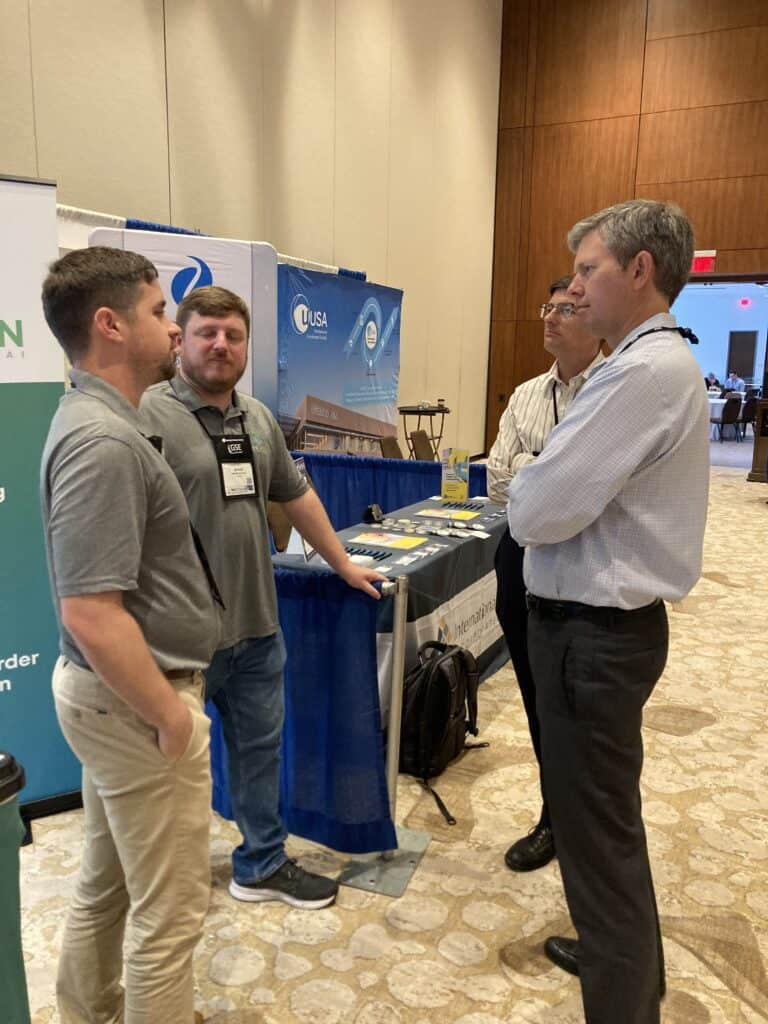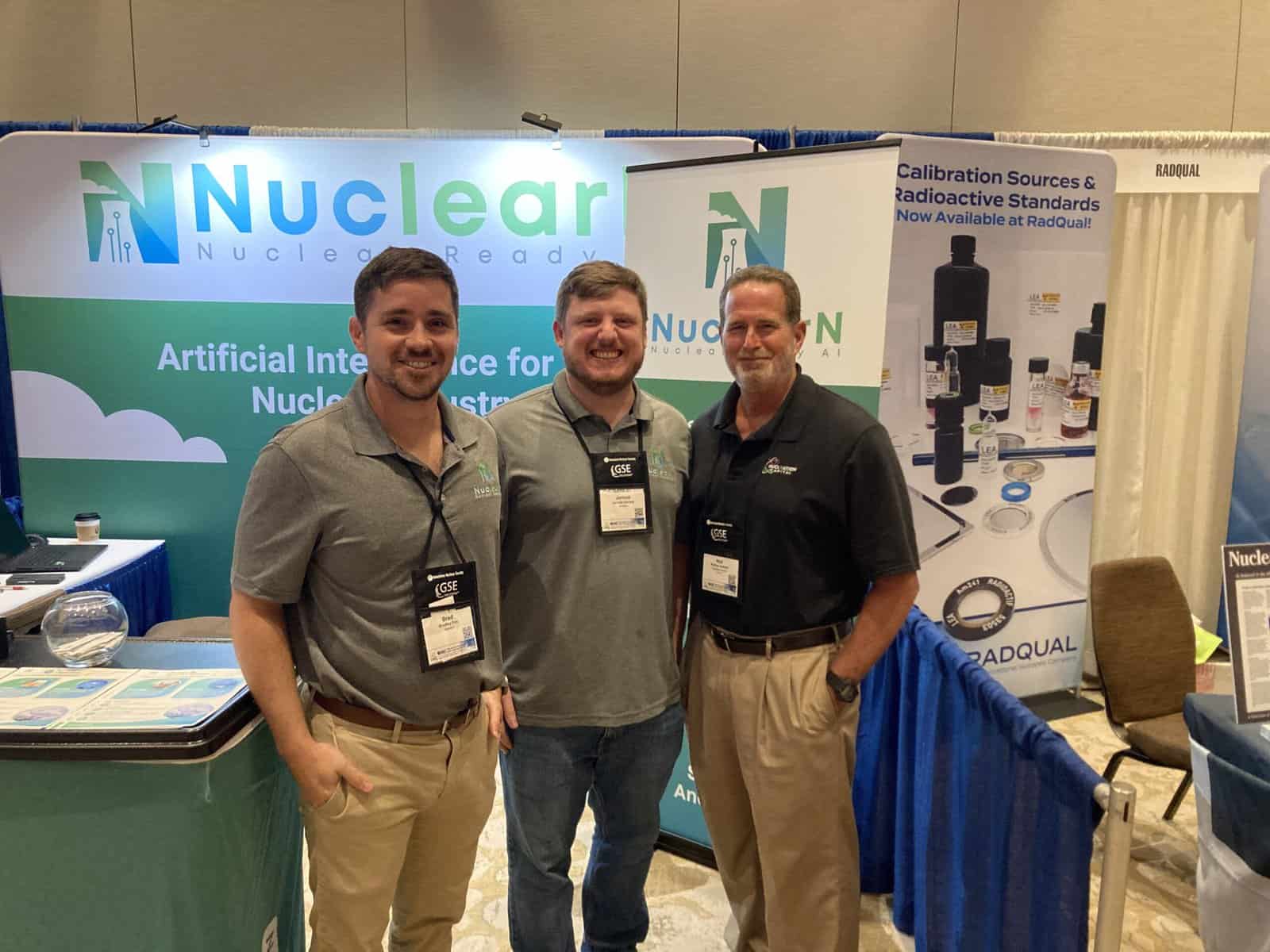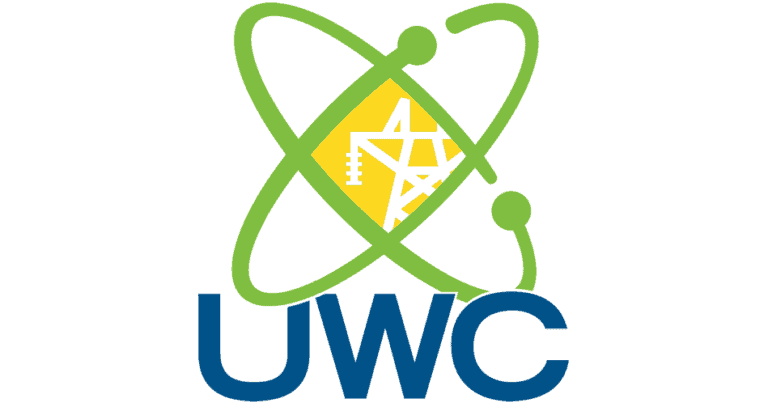Sense of purpose at the 2023 ANS Utility Working Conference
The theme at the annual American Nuclear Society Utility Working Conference (#ANSUWC) was resiliency, a term that applies equally well to the equipment and the people that make up the U.S. nuclear industry. Resiliency is similar to the materials engineering term of toughness; it’s the ability to withstand pressure and blows and to spring back into shape without permanent damage.
Using a pithy phrase created by the master communicators on Madison Avenue – the nuclear industry and its people can “take a licking and keep on ticking.” (I know, some of the readers here might be too young to recognize the products marketed with that phrase or even to know what “Madison Avenue” used to mean to students of commercial communications.)
This will be a multi-part report on the UWC to conform to the (loose) post length standard here on Atomic Insights. ANS’s Nuclear News team attended the event and published a useful summary.
Welcome reception
On Sunday morning, before the official conference kick-off, a self-selected group of resilient nuclear professionals participated in the golf tournament that is a staple of these annual events. The participants earned the resilient descriptor because it was unusually hot and muggy – even for an August day in Florida – in Marco Island on Aug 6, 2023. With the help plenty of sunscreen, hats, water and Gatorade most of the participants managed to complete the round. I respect the endurance of anyone who plays golf in Florida in August, even though I might wonder about their risk assessment skills.
The environment at the conference reception on Sunday evening was more amenable for less resilient people; hotel A/C units partly powered by the Turkey Point Nuclear Plant provided comfortable indoor air temperature and humidity. With registered attendance of more than 700 professionals and a sold out expo floor, there were many clusters of optimistic people talking about nuclear’s role in addressing climate change, recently enacted incentive programs, providing reliable, affordable power for industry and consumers, and the human capital challenge being felt by many companies in the industry.
Several attendees were justifiably proud of the role they had played in the Vogtle 3&4 expansion project; less than a week before the conference, unit 3 began commercial operation. It was a long slog that took more time than expected, but the sense of accomplishment at completing the trailblazing project was palpable.
One of the main topics in the groups that I joined was finance and the increasing interest in investing in the sector. That might have been because I was wearing my Nucleation Capital polo shirt and or because I’ve recently begun to seize opportunities to direct conversations towards monetary topics. Among the many tools involved in accelerating an industry that has not grown very much in the past 30 years; money is one of the most important.
Fortunately, in the US there is a vast amount of money that can rapidly change the direction where it is flowing. Private money managers and individual investors pay attention to signals from the government, but they do not have to fight their way through political budget battles.
That is both a hopeful sign and a warning. Seventeen years ago, at the 2006 UWC, the exhibition floor was larger and the displays were even more elaborate. That event took place about a year after the passage of the Energy Policy Act of 2005. Like the Inflation Reduction Act (IRA) passed last year, EPA 2005 included tax credit programs that stimulated interest and seemed to be a move towards useful financial support.
Those credits, however, did not put any government money into nuclear project development. They were a promised reward that would start paying off after projects were completed and began producing electricity. Unless it earned credits for grid electricity supplied during the power range testing program, Vogtle 3 only began earning credits on July 31, 2023.
The buzz phrase then was “Nuclear Renaissance.” That’s a descriptive pair of words that some speakers at this conference advised us to avoid, but it’s worth noting that the cultural rebirth that historians call the Renaissance took about 50 years to gather the momentum that ended up lasting about 300 years.
People who attended the 2006 meeting were unlikely to have predicted the effects of a series of blows to the industry, including the global financial crisis in 2008, the abundance of low-priced natural gas made available by the technological advances in horizontal drilling combined with hydraulic fracturing, the world’s reaction to damage at a coastal Japanese nuclear plant that was inundated by a tsunami, the bankruptcy of one of the largest and oldest nuclear plant vendors and the under-reported effects of attempting to complete the construction of a large nuclear plant while also protecting workers during a global pandemic whose restrictions lasted more than 2 years.
One of the results of that series of events was that money flows into new nuclear energy essentially dried up. Even the product and service providers to the existing industry saw reductions in revenues caused by cost optimization programs – aka budget cuts.
Aside: I had several conversations during the conference with people who also attended the event in 2006. We shared some stories about the paths we have taken since then while returning to a similar state of anticipation about the industry’s prospects. End Aside.
The nuclear plant construction industry is smaller today than it was in 2006. But it’s gearing up to produce a wide variety of innovative nuclear fission power systems in a full catalog of sizes and specializations. It has taken the beating yet it continues ticking. Money is beginning to flow in the right direction.
Today’s nuclear operating fleet is also smaller than it was in 2006; 12 plants have closed while only one – Watts Bar 2 – started operating before last week’s entry of Vogtle to the fleet. Nuclear plants represent just 7% of total US generating capacity (95.5 GWe – pre-Vogtle – out of 1,300 GWe) but they punch well above their weight by producing more than 18% of US electricity consumption.
Several reception attendees accurately stated that there wouldn’t be as much growing interest in new nuclear without the exceptional performance of existing nuclear.
Day One Plenaries
Conference plenary sessions set the tone and provide a common frame of reference, especially at meetings where there are numerous breakout sessions that take place in each available time slot. For the first plenary session of the UWC, the main speakers included NRC Commissioner Annie Caputo, INPO president ADM Bob (Rat) Willard, and TVA President and CEO Jeff Lyash.
Each took on a separate aspect of the resiliency theme.
Commissioner Caputo chose to focus on the importance of good leadership in shaping organizational focus and the ability to improve. She talked about the example provided by one of her former bosses, John Rowe. During several different power supply crises, he accepted responsibility for his organization’s performance and did not attempt to make any excuses.
During the Q&A, I asked Commissioner Caputo how a commission composed of five coequal members could take similar levels of responsibility. Her answer was that actions could be taken and leadership demonstrated when one commissioner convinces two more members to align with their initiative. The response provides food for thought, especially at a time when there is a vacant seat that was most recently filled by a commissioner (Jeff Baran) who frequently voted against the majority and consistently advocated actions that imposed additional, time-consuming and costly requirements.
Commissioner Caputo also focused on the importance of licensing activities in accomplishing the NRC’s legislatively assigned role. She emphasized that the agency’s priorities and resources had been inappropriately diverted from licensing into a number of less important activities. She used budget numbers to support her points, describing how just 21% of the NRC’s expenditures in 2022 were directly related to licensing and oversight. 79% of the budget was spent on other activities.
She spoke about the importance of performance metrics, effective and efficient licensing reviews and the role that leaders have in setting meaningful and achievable goals, driving improvements, and ensuring agency resilience.
One item in her talk probably confused some members of the audience. She talked about her dismay in learning that the NRC ended its 2022 fiscal year with $92 M left over. She called this “carry over” and implied that it represented wasted resources. As a former government budget analyst, I knew what she was talking about. That still did not mean that I understood why the federal budgeting process considers spending less than budgeted is a bad thing. In most situations, spending less than expected means that savings can be directed to other purchases or activities or can be put in the bank for a rainy day fund.
Unfortunately, the Office of Management and Budget and other layers of the federal budget bureaucracy consider unexpended funds to be a resource that can be moved to other agencies. They view unexecuted funds as an indication that the agency’s budget was too large and needs reduction.
Jeff Lyash, President and CEO of the Tennessee Valley Authority, talked about continued focus on plant operational excellence as a major component of the nuclear industry’s resilience in the face of severe weather and other external impacts. He described TVA’s nuclear plant performance during Winter Storm Elliot as “rock solid” and especially important for maintaining bulk system operability at a time when there were natural gas system supply interrupts, coal pile freezing and a lack of availability for imports, even those that had been contracted in advance.
He said that electricity demand in the TVA service territory is expected to double in the next 25 years due manufacturing growth and increasing electrification, including EV charging. He expects that the nuclear contribution will increase by something close to a factor of three to meet reliability and emissions goals.
Lyash described the Clinch River project as a 4-unit BWRX-300 installation, saying that it would make no sense to build a single reactor. During a conversation before his plenary talk, Lyash told me that the Clinch River Site’s early site permit (ESP) limit of 800 MWe will be revised with the licensing applications for the additional units. It does not have to be done in advance.
The local community, which includes the city of Oak Ridge, and the state of Tennessee were described as strong supporters for new nuclear power plants. The governor has established a focused nuclear energy committee. He has also provided an initial $50 M to help attract nuclear-focused companies and to build Tennessee’s role as an anchor in the new nuclear industry.
TVA owns a wealth of sites that have potential utility as new nuclear power plant sites. They include existing nuclear plant sites, sites that have been previously chosen for nuclear plant construction, retired coal plant sites and sites where the operating coal plant is due to retire soon enough for its output to be replaced by new nuclear units. The company plans to make announcements in the coming years as it narrows its choices to the best sites. Given the announced goal of completing 20 new BWRX-300 units, four additional sites need to be identified.
Exhibition hall
The available exhibit booths were sold out for this conference, providing an additional indicator of the industry’s positive outlook for growth. One of the exhibit highlights was the Transco robot, a four legged creature that displayed impressive dexterity and seemed well-suited for various assignments that might expose a human maintainer to high radiation doses or other dangerous conditions.
The device did a pretty fair job on the dance floor during the Tuesday evening tailgate-themed party. Its rhythm was at least as good as that of some of the engineers who displayed their moves. I was too busy dancing to take a video of the robot’s moves.
As might be expected at a conference that focuses on operations and maintenance of existing nuclear plants, few advanced reactor developers had display booths. Outside of industry stalwarts like Westinghouse, Framatome and General Atomics that have both new reactor designs and products and services for the existing fleet, the only vendor I remember talking to was Kairos Power, which will begin construction on their Hermes test reactor sometime in 2024. My guess is that they were there to engage with potential suppliers.

One of the highlights of the exhibition for me was a face-to-face meeting with Brad Fox and Jerold Vincent, the founders of Nuclearn, an emerging AI company with several products that have demonstrated significant value in the nuclear industry. Their booth saw a steady stream of interested visitors.
My Nucleation Capital partner, Valerie Gardner, and I had met with this duo during several lengthy video conference calls during the past six months. Our discussions and analysis told us that they were a dynamic team in a high growth field, so we joined AZ-VC to make a significant investment in the company. That investment was announced to the public during the ANS UWC.
Valerie was quoted in the Nuclearn funding press release:
“Nuclearn’s focus on deploying AI to enhance the efficiency and performance of nuclear power operations will benefit both the existing nuclear power plant operators as well as the next generation of advanced designs emerging in the coming years,” explained Valerie Gardner of Nucleation Capital. “We’re thrilled to invest in this industrious and talented team and support their vision of growth within the sector.”
The exhibition floors of the most recent nuclear energy conferences I attended before the pandemic were fairly sparse and reflected a general sense that the nuclear industry wasn’t growing. Plant retirements due to temporary economic conditions were putting a damper on expectations even for suppliers that focused on products and services for the established fleet of plants.
That situation has changed. Barring another unexpected burst of supply equivalent to the shale boom and barring a period of collective amnesia about the imperative to address CO2 emissions, it seems likely that the nuclear industry is on the cusp of growth that might rival the boom years of the late 1960s and early 1970s when virtually all new power plants ordered were nuclear.
To be continued…



I worked at TVA’s Bellafonte plant one hot Summer long ago. There had been a huge amount of work done on this plant. Then it was abandoned. It certainly seems like these facilities could be retrofitted as a new plant for far less money than it took to build the new units in Georgia.
Again and again I’ve read that people consider licensing as a major road block to building new nuclear units. As Rod noted in his article, 12 nuclear plants have closed since 2005. I know they are trying to restart one of these, Palisades. I don’t know the fate of the others, but since they have casks of nuclear fuel on site, I doubt whether any of them have been redeveloped. It seems like these would be ideal sites for new reactors as the costly physical structures and substations could be re-utilized. I realize some locations would be politically difficult to begin anew. However, I think most areas would welcome the new economic activity of a retrofitted unit.
Rod’s article stated that TVA electrical demand will double in the next 25 years. I suspect other areas are similar. Besides, many coal plants are closing. People want reliable emission free energy. How difficult would it be to retrofit defunct nuclear plant sites? Is the licensing a total restart or does the fact that nuclear operation was allowed previously allow a huge advantage?